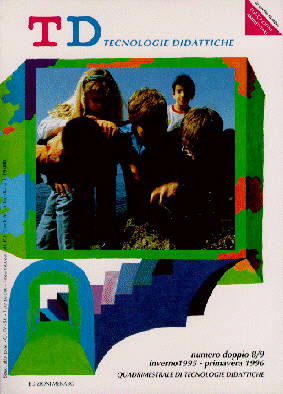Assessment for understanding: assessment in support of innovation projects
Main Article Content
Abstract
Article Details
Authors who publish with this journal agree to the following terms:
- Authors retain copyright and grant the journal right of first publication with the work simultaneously licensed under a Creative Commons CC BY 4.0 Attribution 4.0 International License.
- Authors are able to enter into separate, additional contractual arrangements for the non-exclusive distribution of the journal's published version of the work (e.g., post it to an institutional repository or publish it in a book), with an acknowledgement of its initial publication in this journal.
- Authors are permitted and encouraged to post their work online (e.g., in institutional repositories or on their website) prior to and during the submission process, as it can lead to productive exchanges, as well as earlier and greater citation of published work (See The Effect of Open Access)
References
Adelman C., Kemmis S., Jenkins D. (1980), Rethinking Case Study: Notes From the Second Cambridge Conference in H.Simons (ed), Towards a Science of the Singular, Norwich, CARE.
Giovannini M.L.(a cura di) (1988), La valutazione delle innovazioni nella scuola, Bologna Cappelli.
Guba, Egon G., Lincoln, Yvonna S. (1981), Effective Evaluation. Improving the Usefulness of Evaluation Results Through Responsive and Naturalistic Approaches, San Francisco Washington London, Jossey-Bass Publishers.
Guba, Egon G., Lincoln, Yvonna S. (1989), Fourth Generation Evalutation, Newbury Park, CA, Sage.
Huberman M. (1983), S’valuer pour s’illusioner? Promesses et cueils de l’evaluation “adaptive-interactive” des innovations scolaires, Cahier du Groupe des chercheurs romans en pedagogie, 9, Neuchatel.
Kemmis S. (1980), The imagination of the case and the invention of the Study, in H. Simons (ed), Op.cit.
MacDonald B. (1974), Evaluation and the control of education, in B.MacDonald and R.Walker (eds), Innovation, Evaluation, Research and the Problem of Control (SAFARI), Norwich, Centre for Applied Research in Education.
Losito B. (1993), Lo studio di casi nella ricerca educativa, in Idem Che cosa la ricerca azione?, Fenestrelle, Regione Piemonte.
Quaglino G.P., Materiali per una teoria del cambiamento organizzativo, in G.P. Quaglino (a cura di), Figure del cambiamento organizzativo, Torino, Tirrenia Stampatori, 1987.
Rabitti G. (a cura di) (1995), Valutazione dell’area di progetto per l’educazione ambientale, Bologna, IRRSAE Emilia Romagna MPI Direzione generale dell’Istruzione Tecnica.
Rovetta A. (1994), Innovazione, cambiamento, scuola, giovani, in 1970 2000. Innovazione scolastica: dalla teoria alla pratica, “OPPI Documenti”, XVI, n.61-62, pp.28-43.
Stake, R.E.(1975), Evaluating the Arts in Education: A Responsive Approach, Columbus, Ohio, Merrill.
Stake, R.E. (1988), La valutazione “responsive”, in M.L.Giovannini (a cura di) La valutazione delle innovazioni nella scuola, Bologna, Cappelli, pp.49-59 (trad. di G. Rabitti).
Stake, R.E. (1995), The Art of Case Study Research, Thousand Oaks London New Delhi, Sage Publications.
Stenhouse L. (1975), Case Study in Comparative Education: particularity and generalisation, in Comparative Education, Vol.15, n.1, pp.5-10.

